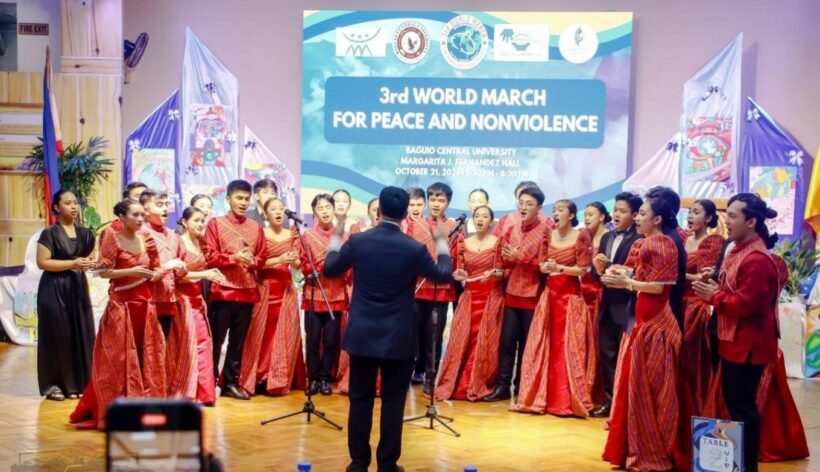by: Teresa Lyn D. Matiwtiw
“Heal the world, make it a better place. For you and for me and the entire human race…” Those powerful lyrics from Michael Jackson’s song filled the hall, touching everyone present as the BCU Chamber Choir set the tone for the 3rd World March for Peace and Non-Violence at Baguio Central University on October 21, 2024. Their performance, rich with emotion and passion, reminded us all that music is a universal language—one that can surpass barriers and reach into the hearts of people across all walks of life. The event, running from 5:30 to 8:30 PM, brought together administration, trustees, students, faculty, and community members—all united by a shared dream for a more peaceful world.

After the choir’s emotional performance, University President Margarita Cecilda B. Rillera kicked off the evening reminding us all why we came together that evening. “Every step we take on this journey brings us closer to a future that holds promise—a future where understanding replaces conflict, and love overcomes hate,” she said. With a warm smile, she added, “When we come together, we’re creating ripples of change that reach far beyond this hall, touching communities everywhere.”
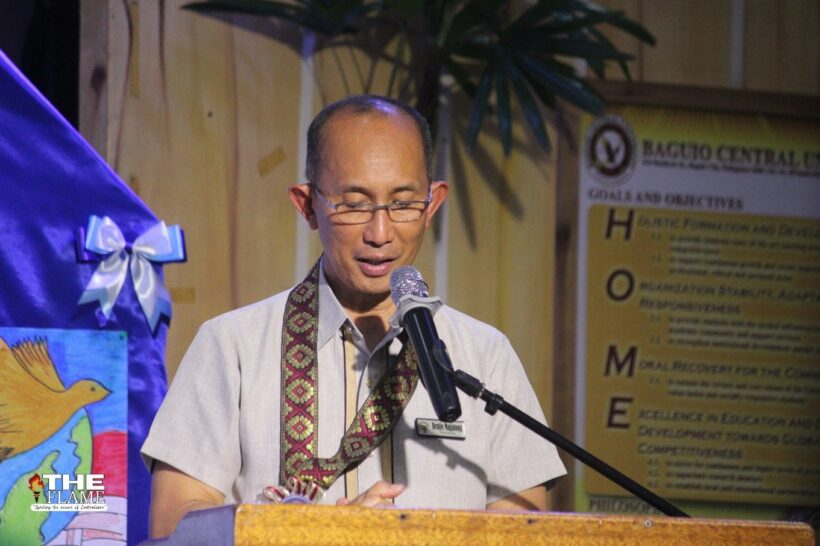
Next, the Father of the City, Mayor Benjie Magalong took the stage, building on that message of unity. He talked about how important it is for all of us to work together stating that “peace is a collective effort” and that “every voice, no matter their background, should be heard.” His words served as a powerful reminder that building a peaceful community requires us to bridge our differences and work together.
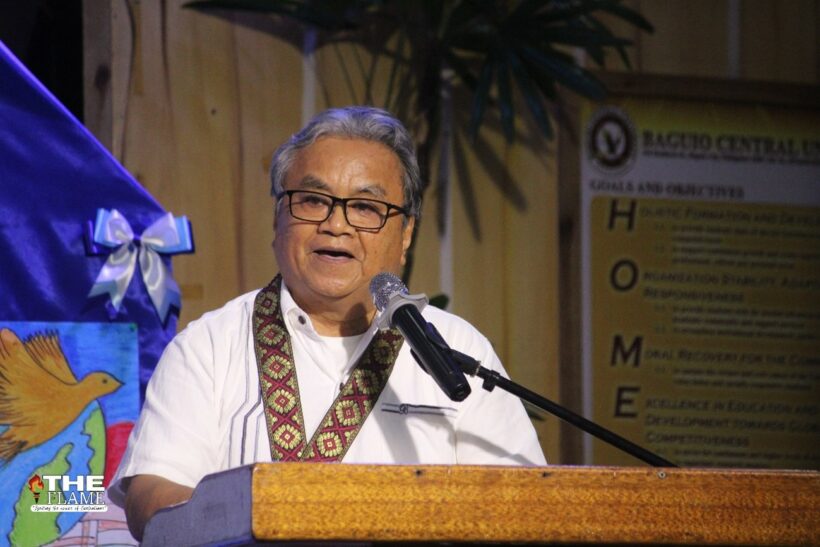
Then, Father Ramon R. Caluza, CICM, brought a more personal touch, sharing insights into the traditions of the Cordillera region. He talked about Binnadang , a local tradition of helping one another. “Let’s unite for peace in our world today, supporting each other as we do through Binnadang,” he said, drawing a connection to how the region’s bodong, or peace pact, helps resolve conflicts. It was a reminder of how dialogue and community support can help us find common ground.
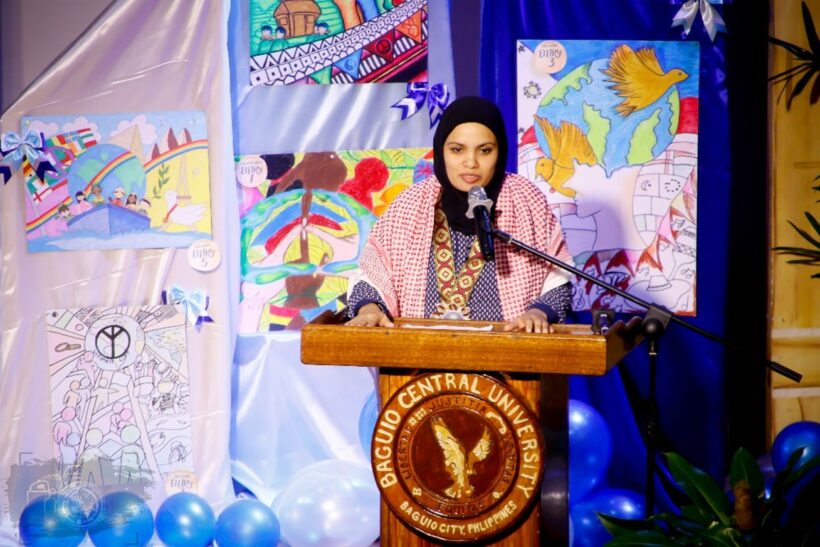
Mrs. Mahadia Soria Franji, a refugee from Gaza, then shared her story, and it struck a deep chord with the audience. “Achieving peace is everyone’s responsibility—it’s about all our efforts and perspectives,” she said. “When we come together, peace isn’t just a distant dream—it’s something we can build, something we can all share.” Her words, paired with a powerful video showing the realities of war, made everyone feel how deeply conflict affects us all, no matter our background or status. Her story is a testament to the strength of those who have faced the harsh effects of conflicts and their hopes for a brighter future.
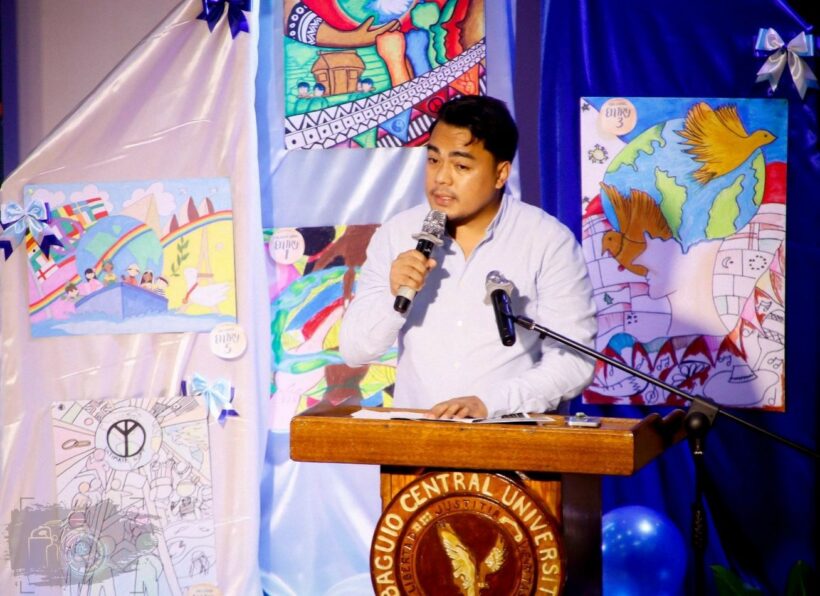
After her, Mr. Ryan Javier, a Senior Brand Manager at UNICEF Philippines, talked about the role of young people in creating a better world. He pointed out, “Every child deserves a safe space to grow, where their voices are truly heard.” He added, “Young people aren’t just the leaders of tomorrow—they are leaders of today.” His words were a call to recognize how the younger generation is already shaping the future of peace.
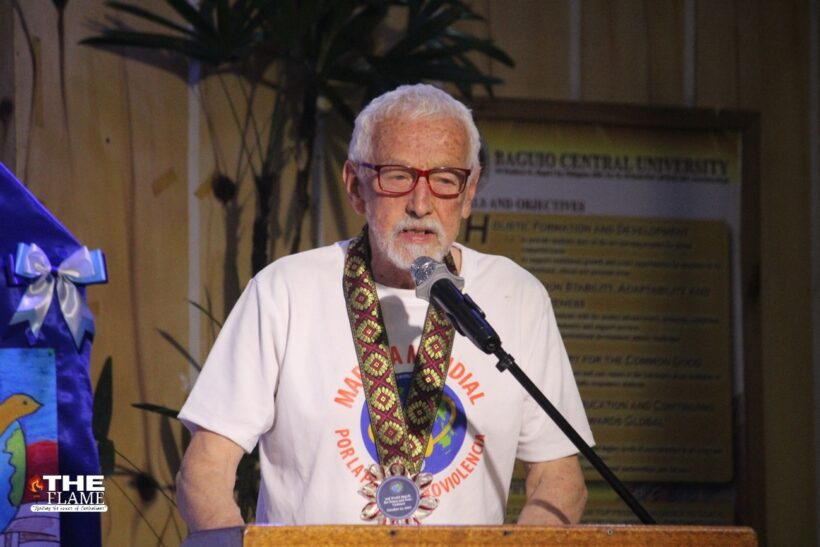
Mr. Wilfredo Alfsen of the World March Base from Chile took the floor following the speech of Mr. Ryan Javier. He reflected on the power of non-violent actions and social movements in building a future free from violence. He said, “A culture of peace and understanding can lead to a better future for humanity and the environment.” He thanked the audience, noting that “progress is best achieved collectively, rather than in isolation,” and thus a better world is possible.

Later, Tiziana Volta, the coordinator of the 3rd World March for Peace and Non-Violence in Switzerland, Germany and the Philippines, shared her thoughts through a recorded video on the ups and downs of working toward global harmony. She admitted, “Finding peace isn’t always easy, especially with all our differences. But if we come together, we can make it happen.” Her words were a gentle nudge to remember that while the path to peace can be tricky, collaboration is the key.
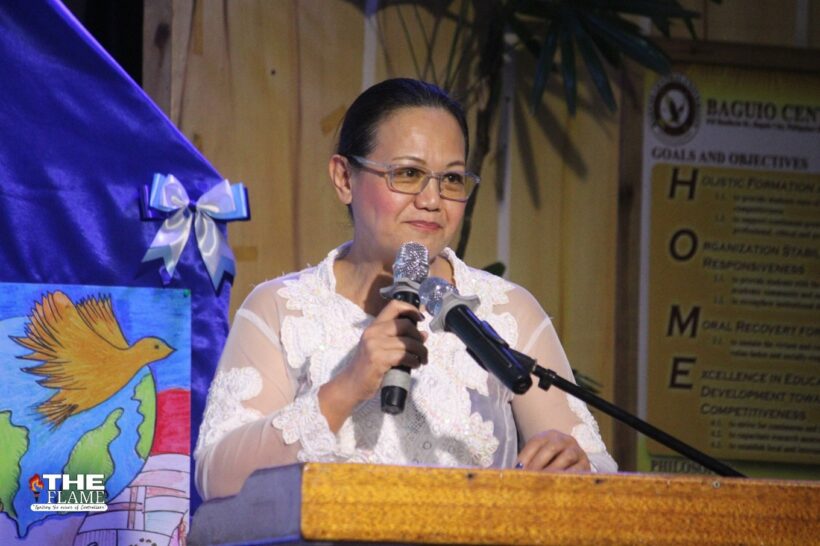
The evening continued with Dr. Genevieve B. Kupang, the Dean of the Graduate School and International Relations Officer who presented a peace framework inspired by Dr. Toh Swee-Hin. She emphasized the importance of justice, compassion, human rights, cultural respect, and environmental harmony. She spoke about the need to “dismantle the culture of war” and “live with justice and compassion. Her message was simple but powerful: peace isn’t just about the big picture; it’s about how we treat each other every day.
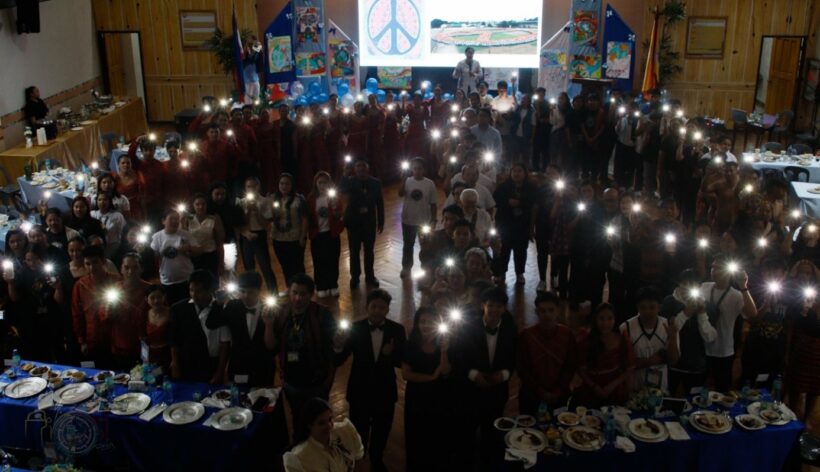
As the night went on, the BCU Function Hall felt like a place where hope was real. People came together, hand in hand, creating the human peace sign imagining a world where human world peace wasn’t just a slogan. It is the moment of unity and hope in the dark. Every light held up means strength and a collective will for peace, even though it seems the world has been hard to live in. The illuminated faces tell us that, no matter how difficult the journey, there is always hope for a brighter, more peaceful future. These lights together act as a beacon guiding people toward a world where harmony and understanding can prevail. The whole room was filled with warmth and the belief that maybe, just maybe, a better world is possible if we all work for it.
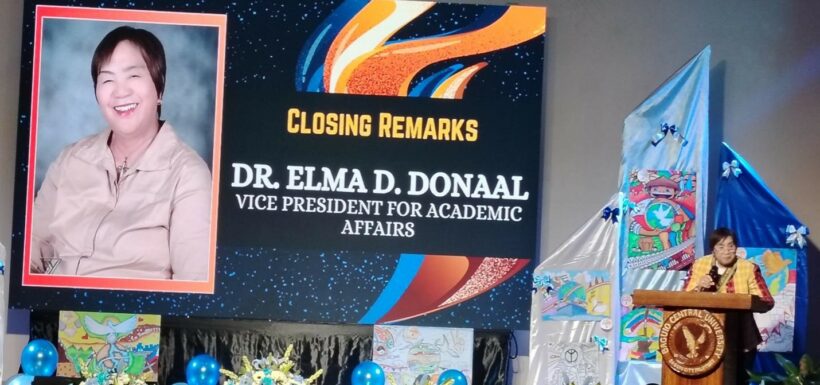
Wrapping things up, Dr. Elma D. Donaal, BCU’s Vice President for Academic Affairs, shared some final thoughts. “Let’s keep working to connect our differences, to better understand each other, and to stand up for peace wherever we go,” she encouraged. Her words were a reminder to carry the spirit of peace beyond the evening, into our everyday lives.
The event wasn’t just a gathering—it is the beginning of something! It was a heartfelt call to action, showing how powerful it can be when people come together. It was a proof that creating a peaceful world isn’t just a dream—it’s something we can build, step by step, with each other.
As educators, our work is far more profound than just teaching and academics to build a peaceful world. Such an event as the World March for Peace offers student experiences in peacebuilding and empathy and social justice a chance to be brought out of the classroom. It is through such experiences that the values we impart in the classroom—empathy, inclusiveness, and a commitment to social justice—become truly tangible. More importantly, it inspires us as educators to critically think about the role that education can play in realizing a peaceful society, moving us to put peace and non-violence in the curriculum.
The message shared by our Dean, Dr. Kupang, on challenging the culture of war and embracing compassion aligns with the values I hope we all impart in the classroom. I believe that teaching goes beyond knowledge transfer; it is about nurturing minds that can critically assess global issues and cultivate peace in the communities.
Together, we can make a world of difference — for you and for me and the entire human race… Peace and Good!
Photos courtesy of The Flame, BCU Official Publication and Sir Michael Rodriguez, used with permission
#WorldMarchForPeacePhilippine Chapter
#BaguioCity,BCUForPeace
#SDG16PeaceAndJustice
#SDG17PartnershipsForTheGoals
#PeaceAndUnity2024
#TogetherForABetterWorld
About the Author:

Teresa Lyn D. Matiwtiw, is currently an instructor at the College of Teacher Education and Liberal Arts and the Graduate School at Baguio Central University. Her work focuses on empowering future educators and fostering a commitment to social responsibility and community engagement.


